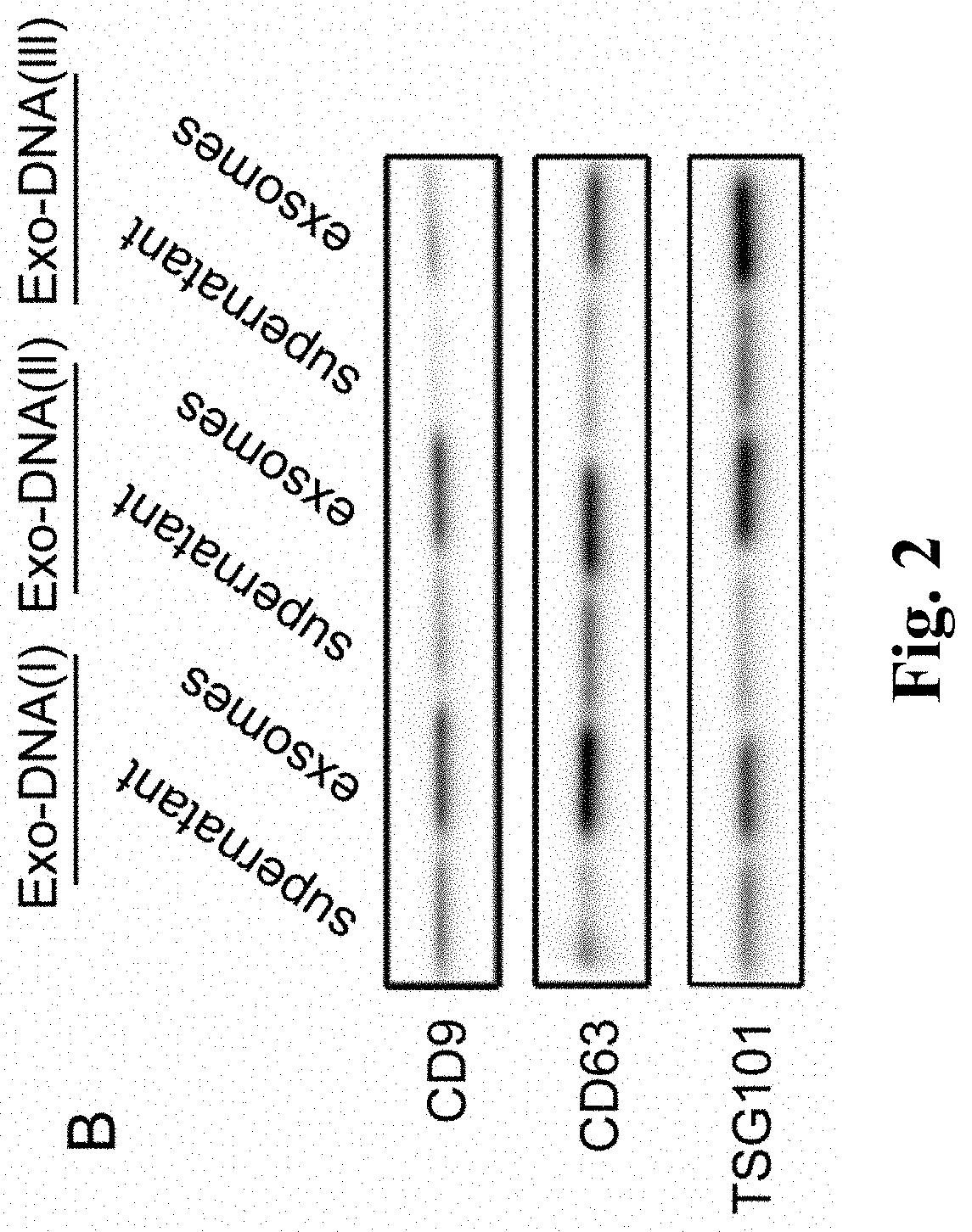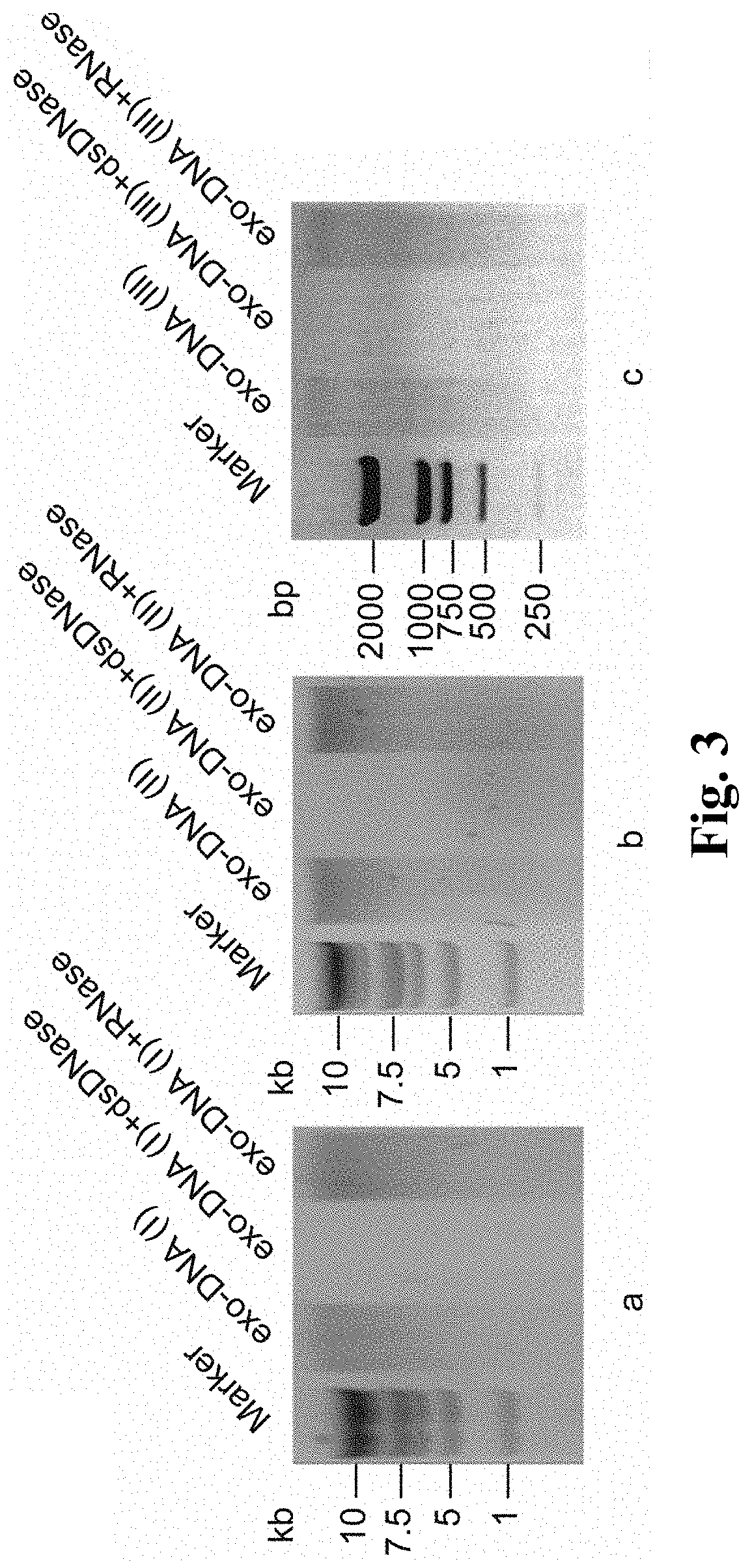Biomarker for Early Diagnosis and Preoperative Assessment of Pheochromocytoma/Paraganglioma, and Application thereof
a biomarker and pheochromocytoma technology, applied in the field of tumor diagnosis and treatment, can solve the problems of limiting the preoperative evaluation and early diagnosis of genetic testing, research is a technical blank, and the exosomes of pcc and pgl patients carry genetic information that reflects the parental tumor cells, etc., and achieve the effect of effective methods
- Summary
- Abstract
- Description
- Claims
- Application Information
AI Technical Summary
Benefits of technology
Problems solved by technology
Method used
Image
Examples
example 1
[0028]1 Patients and Tissue Samples Collection
[0029]15 clinical cases of sporadic PCC and PGL and tumor samples were collected for gene testing. Among them, three of the tumors did not have germline or somatic mutations in the 12 known susceptibility genes, the other 12 tumors had RET, VHL, HIF2A, and SDHB somatic mutations. There was no adjuvant radiotherapy or chemotherapy before tumor resection. Peripheral blood (10 ml) was collected from each patient. The blood samples were subjected to centrifugation at 3,000 g for 10 min at 4° C., to isolate serum for the extraction and analysis of exosome and DNA.
[0030]2 Cell Culture
[0031]During PC12 cell culture, to avoid contamination from the exosomes in serum, the fetal bovine serum (FBS) and horse serum (HS) was subjected to ultracentrifugation for 11 h at 100,000 g. The supernatant was taken. PC12 cells were cultured in basic medium RPMI 1640 (Gibco) with 10% HS (exosome-depleted) and 5% FBS (exosome-depleted), with medium changes every...
example 2
[0037]1 Isolation and Characterization of Exosomes from Cells and Serum
[0038]Exosomes were isolated from the medium collected from PC12 cells, the serum of nude mice implanted with mutated xenografts, and PCC and PGL patient serum, respectively.
[0039]1) PC12 cells in a logarithmic growth period were chose, and its medium was replaced with medium containing 10% HS and 5% FBS that had been depleted of exosomes. Then, the conditioned medium was subjected to centrifugation at 3,000 rpm for 10 min at 4° C. to remove cellular debris and dead cells. The supernatants were subjected to differential centrifugation at 100,000 g for 2.5 h. The exosome pellets were washed with 1×PBS one time and subjected to centrifugation at 100,000 g for 70 min. The final exosome pellets were re-suspended in 1×PBS.
[0040]2) To isolate exosomes from the peripheral blood, samples were subjected to centrifugation at 3,000 rpm for 15 min at 4° C. to separate the serum. The collected serum was centrifuged at 3,000 r...
PUM
| Property | Measurement | Unit |
|---|---|---|
| volume ratio | aaaaa | aaaaa |
| volume ratio | aaaaa | aaaaa |
| temperature | aaaaa | aaaaa |
Abstract
Description
Claims
Application Information
 Login to View More
Login to View More - R&D
- Intellectual Property
- Life Sciences
- Materials
- Tech Scout
- Unparalleled Data Quality
- Higher Quality Content
- 60% Fewer Hallucinations
Browse by: Latest US Patents, China's latest patents, Technical Efficacy Thesaurus, Application Domain, Technology Topic, Popular Technical Reports.
© 2025 PatSnap. All rights reserved.Legal|Privacy policy|Modern Slavery Act Transparency Statement|Sitemap|About US| Contact US: help@patsnap.com



